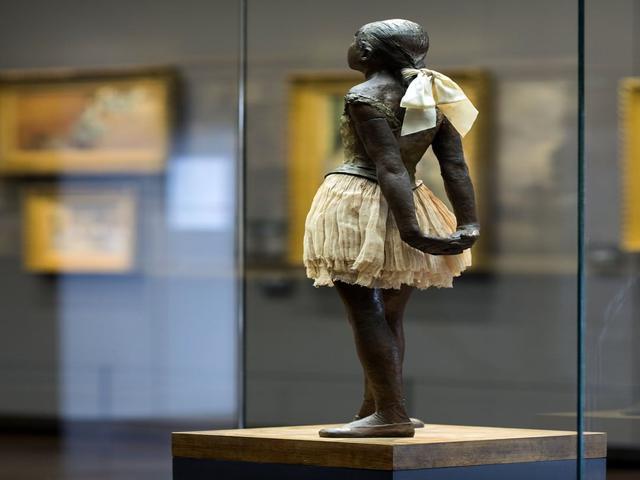Nude study for the great dressed dancer

Nude study for the great dressed dancer is a captivating piece of art created by the renowned artist Edgar Degas. This particular work showcases Degas' exceptional talent in capturing the human form, particularly that of a dancer. The nude study serves as a preliminary sketch for one of Degas' most famous paintings, The Great Dressed Dancer, which depicts a ballerina in a stunning costume. Through this study, viewers are able to witness Degas' meticulous attention to detail and his ability to convey movement and grace in his subjects.
Degas' fascination with dancers is evident in Nude study for the great dressed dancer, as he often depicted these performers in various stages of their art. The artist's keen eye for anatomy and his skillful use of light and shadow bring the dancer to life on the canvas. The study captures the essence of the dancer's form, from the curve of her back to the arch of her foot, showcasing Degas' mastery of capturing the human figure in motion.
As one of the pioneers of Impressionism, Degas' work often challenged traditional artistic conventions, pushing boundaries and exploring new techniques. Nude study for the great dressed dancer is a prime example of Degas' innovative approach to art, as he blends elements of realism with his own unique style. The study serves as a window into Degas' creative process, offering viewers a glimpse into the artist's thought process and his dedication to his craft.
Displayed in museums around the world, Nude study for the great dressed dancer continues to captivate audiences with its beauty and complexity. Degas' ability to capture the essence of his subjects and convey emotion through his art is truly remarkable. Whether you are a seasoned art enthusiast or a casual observer, this piece is sure to leave a lasting impression and inspire a deeper appreciation for the artistry of Edgar Degas.
© ChatGPT 3.5
Something that is very important to know is that this was the only sculpture that Degas exhibited during his lifetime. He created around 150 wax sculptures, but no one saw them until 1918, when they were cast in bronze by the Hébrar Foundation, although 74 of these were cast in bronze.
By this point in his life Degas was going blind, or at least unable to paint them, and that is why he decided to sculpt them. Although there are rumors that he was not actually as blind as he claimed.
The Little Dancer was a sculpture that was modeled by Marie van Goethem.
This sculpture was made of wax, which was a material that was not widely used at that time, although it was beginning to make a comeback.
Something impressive is that a collector paid 20.6 million dollars for one of these statuettes, of which there are 28, cast in bronze, around the world. The original wax model was purchased in 1956 by Paul Mellon, his wife and he later donated his collection of Degas sculptures, which consisted of 49 wax sculptures, ten in bronze and two more in plaster. This was considered the largest collection of Degas sculptures. The lucky place to receive this large donation was the United States National Gallery of Art.